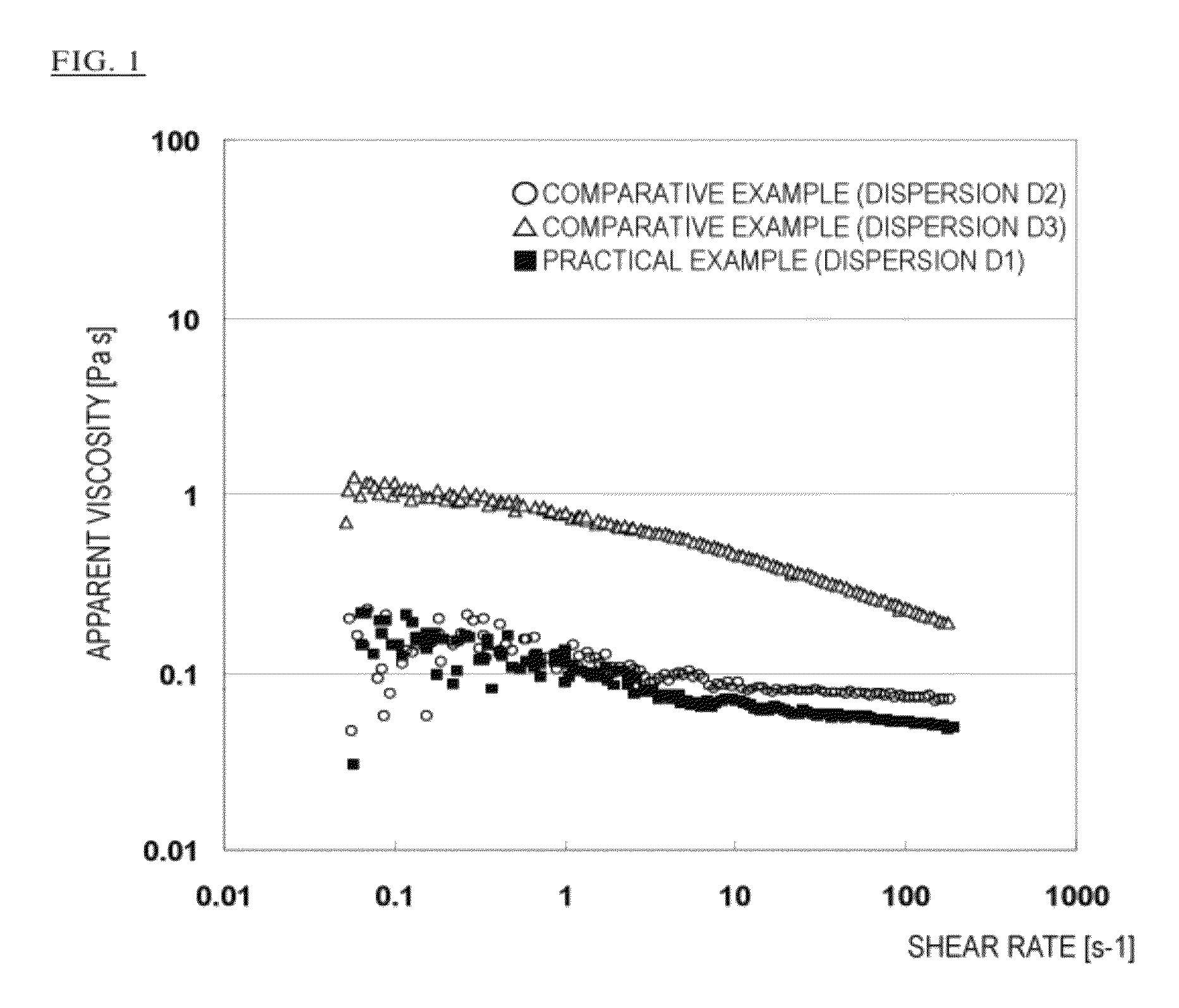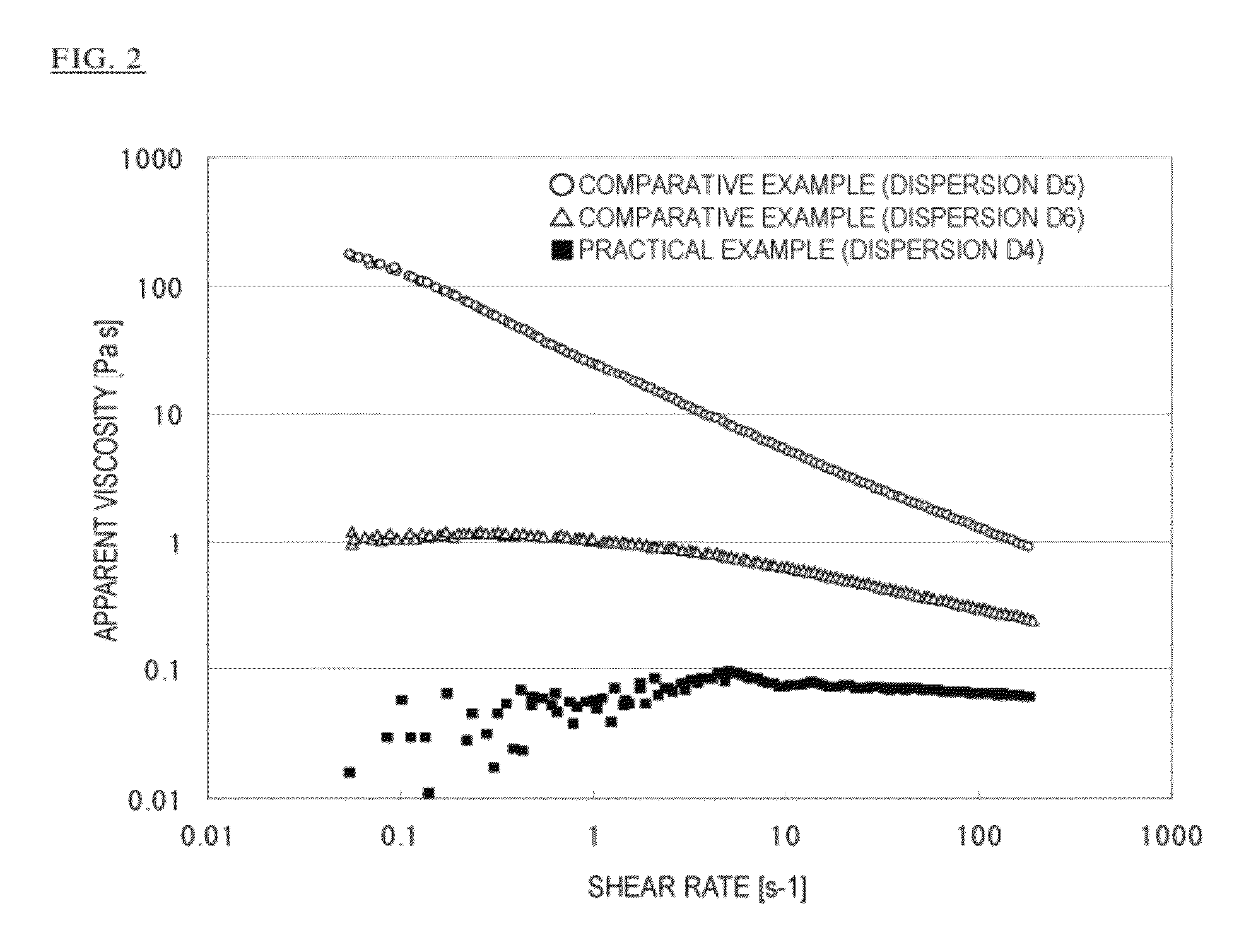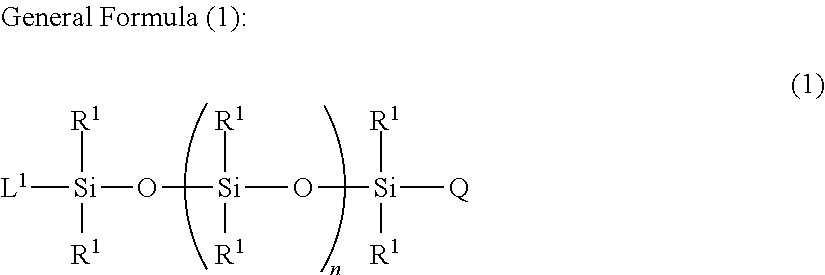Organopolysiloxane copolymer
a polymer and organopolysiloxane technology, applied in biocide, hair cosmetics, make-up, etc., can solve the problems of excessive strength of the feel derived from silicone, poor compatibility with skin, insufficient moisturizing, etc., and achieve superior surface activity and powder treatment capability, compounding stability superior
- Summary
- Abstract
- Description
- Claims
- Application Information
AI Technical Summary
Benefits of technology
Problems solved by technology
Method used
Image
Examples
example 1
Practical Example 1
Synthesis Example 1
Synthesis of Organopolysiloxane Copolymer P1
[0306]624 g of 1,3-dihydrodisiloxane were added to a two-liter four-necked flask to which an agitation device, a thermometer, and a reflux condenser were attached, and heated to 75° C. Thereafter, a mixture of 300 g of tris(trimethylsiloxy)(vinyl)silane and 464 mg of a platinum catalyst was added dropwise to the flask over a period of three hours. After aging for one hour, ablation of the tris(trimethylsiloxy)(vinyl)silane was confirmed via gas chromatography. The excess 1,3-dihydrodisiloxane was removed under reduced pressure and, thereafter, a mixed solution of 412 g of tetraglycerin monoallyl ether and 412 g of IPA was added dropwise. After aging for six hours at 100° C., ablation of the Si—H bonds was confirmed using IR spectroscopy. Then, the volatile content was removed under reduced pressure. Thus, the organopolysiloxane copolymer P1 was obtained. Yield thereof was 600 g (79% yield). The molecul...
example 2
Practical Example 2
Synthesis Example 2
Synthesis of Organopolysiloxane Copolymer P2
[0307]300 g of 1,3-dihydrodisiloxane were added to a one-liter four-necked flask to which an agitation device, a thermometer, and a reflux condenser were attached, and heated to 75° C. Thereafter, a mixture of 169 g of tris(trimethylsiloxy)(hexenyl)silane and 235 mg of a platinum catalyst was added dropwise to the flask over a period of two hours. After aging for one hour, ablation of the tris(trimethylsiloxy)(hexenyl)silane was confirmed via gas chromatography. The excess 1,3-dihydrodisiloxane was removed under reduced pressure and, thereafter, a mixed solution of 198 g of tetraglycerin monoallyl ether and 198 g of IPA was added dropwise. After aging for six hours at 100° C., ablation of the Si—H bonds was confirmed using IR spectroscopy. Then, the volatile content was removed under reduced pressure. Thus, the organopolysiloxane copolymer P2 was obtained. Yield thereof was 310 g (80% yield). The molec...
example 3
Practical Example 3
Synthesis Example 3
Synthesis of Organopolysiloxane Copolymer P3
[0308]936 g of 1,3-dihydrodisiloxane were added to a two-liter four-necked flask to which an agitation device, a thermometer, and a reflux condenser were attached, and heated to 75° C. Thereafter, a mixture of 450 g of tris(trimethylsiloxy)(vinyl)silane and 174 mg of a platinum catalyst was added dropwise to the flask over a period of four hours. After aging for one hour, ablation of the tris(trimethylsiloxy)(vinyl)silane was confirmed via gas chromatography. The excess 1,3-dihydrodisiloxane was removed under reduced pressure and, thereafter, 231 g of glycerin monoallyl ether was added dropwise. After aging for seven hours at 100° C., ablation of the Si—H bonds was confirmed using IR spectroscopy. Then, the volatile content was removed under reduced pressure. Thus, the organopolysiloxane copolymer P3 was obtained. Yield thereof was 800 g (97% yield). The molecular weight was 588. The product was identi...
PUM
| Property | Measurement | Unit |
|---|---|---|
| diameter | aaaaa | aaaaa |
| wt. % | aaaaa | aaaaa |
| wt. % | aaaaa | aaaaa |
Abstract
Description
Claims
Application Information
 Login to View More
Login to View More - R&D
- Intellectual Property
- Life Sciences
- Materials
- Tech Scout
- Unparalleled Data Quality
- Higher Quality Content
- 60% Fewer Hallucinations
Browse by: Latest US Patents, China's latest patents, Technical Efficacy Thesaurus, Application Domain, Technology Topic, Popular Technical Reports.
© 2025 PatSnap. All rights reserved.Legal|Privacy policy|Modern Slavery Act Transparency Statement|Sitemap|About US| Contact US: help@patsnap.com



